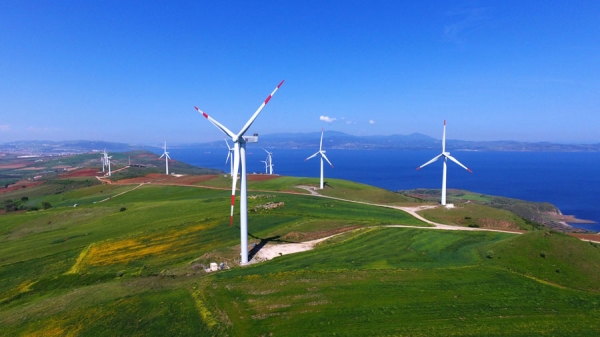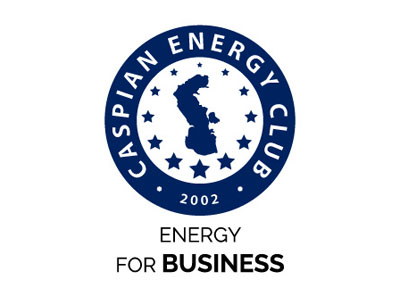Despite the ongoing controversial trends about more active introduction of renewable energy sources replacing oil and gas, the latter do not give up their positions, demonstrating their need at times of high consumption seasons. Such things happen during a long winter in Europe or a hurricane season in the United States.
Nevertheless, renewable energy sources (RES) stay an important source of electricity in the EU. According to the published data from Eurostat, in 2020 the EU imported 58% of the energy consumed, as its own production met only 42% of the demand.
In the pre-pandemic year, solar and wind energy continued to dominate the expansion of RES capacities which accounted for 90% of the total net RES growth in 2019. The volume of solar energy increased from 586 kW by 20%, and wind energy - from 623 GW by 10%. China and the United States continued to dominate the expansion of wind energy, while China, India, Japan, the Republic of Korea and Vietnam had the highest new solar energy capacities in 2019.
According to the Renewable Energy Investment Tracker, the volume of renewable energy investments amounted to 174 billion US dollars in the first half of 2021, which for all time observations is historically the largest amount of investments made in the first half of the year. It is 1.8% more than the figures registered in the same period of last year.
At the same time, it should be noted that a larger volume of investments, as a rule, is fixed in the second half of the year.
Investments in wind energy were lower than in the first six months of last year, and in solar photovoltaic energy - higher.
The EU’s 2020 energy balance consisted of 35% oil and petroleum products, 24% natural gas, 17% renewable energy, 13% nuclear energy and 11% solid fossil fuels. The 2020’s import of energy resources from Russia met 24.4% of the EU’s energy needs, this is, in fact, a «control stake» of energy supply, so any supply restriction will affect, to a greater or lesser extent, the energy supply of the EU – the world’s third economy after China and the United States (IMF data says). Therefore, here, the European economy, as in the case of gas supplies, needs the import of clean energy from new sources. Azerbaijan, whose economy is based on oil and gas projects, is actively promoting the development of «green» energy.
The government has been assigned a task to increase the share of renewable energy sources (RES) to 24% from the current 17.3% in total energy production by 2024, and to reach a 30% share (due to new capacities of 1,500 MW) by 2030.
The favorable geographical location of the country and excellent climatic conditions allow to use the wind energy (technical capacity is estimated at 3 thousand megawatts, economic – 800 megawatts) and solar energy capacities – more than 20 thousand megawatts.
The current total capacity of the country’s energy system (including RES) is more than 7 thousand MW. Besides, wind and solar energy have so far been used at a minimum.
Meanwhile, creation of renewable energy sources will make it easier for Azerbaijan to achieve its obligations under the Paris Climate Agreement (to reduce greenhouse gas emissions by 40% by 2030 compared to 1990) and integrate into numerous projects of international importance. All the renewable energy projects are in the focus of attention of the President of Azerbaijan.
The Absheron Peninsula and the Azerbaijani sector of the Caspian Sea, where winds blow about 300 days a year, are promising for the development of this segment of RES. During the year the average wind speed here is 6-10 m/s which is optimal for efficient operation of wind farms. The Karabakh region, liberated from the Armenian occupation, has a huge prospect for wind energy. There are also prospects for building solar power plants in these territories. It is no coincidence that a decision to implement several renewable energy projects in Karabakh and East Zangezur (potential — 9-10 thousand MW) was passed at the highest level in Azerbaijan.
The very first major renewable energy project in Azerbaijan was agreed with ACWA Power from Saudi Arabia, with which the Ministry of Energy of Azerbaijan signed a $300 million investment agreement in December 2020, and signed were also a 20-year energy purchase agreement and transmission network connection agreement between the Saudi Arabian company and Azerenerji OJSC to implement a project on a “build-own-operate” basis for a 240 MW facility – 40 turbines, each with a capacity of 6 MW.
Of these, 17 wind turbines will be installed in Pirekyushkul village of the Absheron district and 23 turbines in Sitalchai village of the Khizi district (45 km northwest of Baku). This expanded power grid will be able to generate 1 billion kWh of electricity annually, saving up to 220 million cubic meters of gas.
Construction work started in early 2022, and commercial commissioning is scheduled for mid-2023.
A 230-MW solar plant project worth 225 mln dollars and implemented together with Masdar (UAE) is expected to be launched in Azerbaijan by the fall of 2023. The facility will be located 75km to the south-west of Baku. The Company will study the prospects of building wind farms.
The strategic partner, the British giant BP, will finally decide on the possibility of building a solar power plant with a capacity of 240 megawatts in the Jabrayil district for $ 200 million by mid—2022.
The Ministry of Energy’s auctions for building 5 small and medium-sized wind generators and three solar ones can start in 2022.
Renewable energy projects also open the way for the launch of hydrogen fuel production in Azerbaijan over the course of time.
This issue is important in connection with the new EU requirements for gas suppliers to Europe to ensure that both hydrogen (by 2030 - up to 20% in the mixture) and biomethane are pumped through gas pipelines.





